The Italian Villa I Tatti sits in the foothills east of Florence in a stony landscape pockmarked by quarries that supplied the pietra serena for Renaissance Florence. Built in the 16th century and renovated in the early 1900s for the American art dealer Bernard Berenson and his wife Mary Pearsall Smith, the villa and garden located in Settignano are now owned by Harvard University.
Berenson’s donation allowed Harvard to create The Center for Italian Renaissance Studies. To maintain the atmosphere of contemplation conducive to the exchange of ideas that Berenson believed in, the university strictly controls access and limits groups to a maximum of eight.
Is it because of these restrictions that the reputation of I Tatti is mixed? Those lucky enough to be admitted usually rave about the garden, those who resent the tight controls often criticize it rather dismissively.
Consider this review from the English website Garden Visit:
“The famous art historian, Bernard Berenson, bought the Villa I Tatti in 1905 and (in 1909) commissioned two Englishmen (Cecil Ross Pinsent and Geoffrey Scott) to re-design the garden. Scott was famous as the author of a book on The Architecture of Humanism. Pinsent was a young and unknown architect. …. The results of their work has [sic] many renaissance features, and a friendly pastiche charm, but it does not have the disciplined ‘feel’ of a genuine renaissance garden.”
A “friendly pastiche charm” —do I detect a nose in the air?
Visiting I Tatti had long been on my ‘want-to-do’ list. I was eager to see how it fit into Pinsent’s work as a whole, how it related to Le Balze, Villa Medici and La Foce. So I was delighted when recently I had the opportunity to spend an afternoon in the garden with Professor Allen Grieco, Assistant Director of the Center with responsibility for the gardens and grounds.
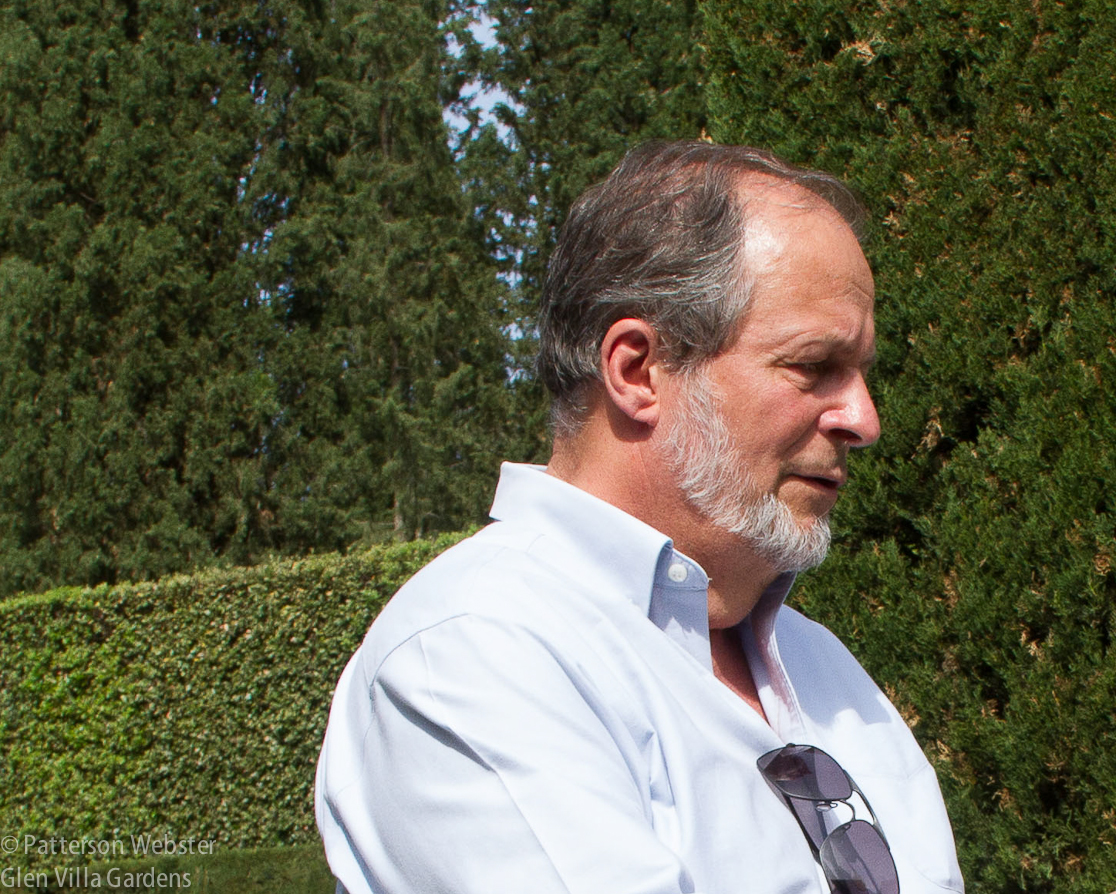
Professor Allen Grieco is a Renaissance scholar as well as being in charge of the garden and grounds at I Tatti.
Knowing that this was Pinsent’s first major commission, I was expecting to see the work of a beginner, a young man still tentatively finding his way. That is not what I saw.
Situated on the side of a steep hillside, Villa I Tatti’s site is challenging and yet Pinsent turned that challenge to advantage. Originally the entrance to the property was at the bottom of the garden; in Berenson’s day, visitors made their way up to the villa along a cypress-lined allée that was one of the first areas of the garden that Pinsent designed.
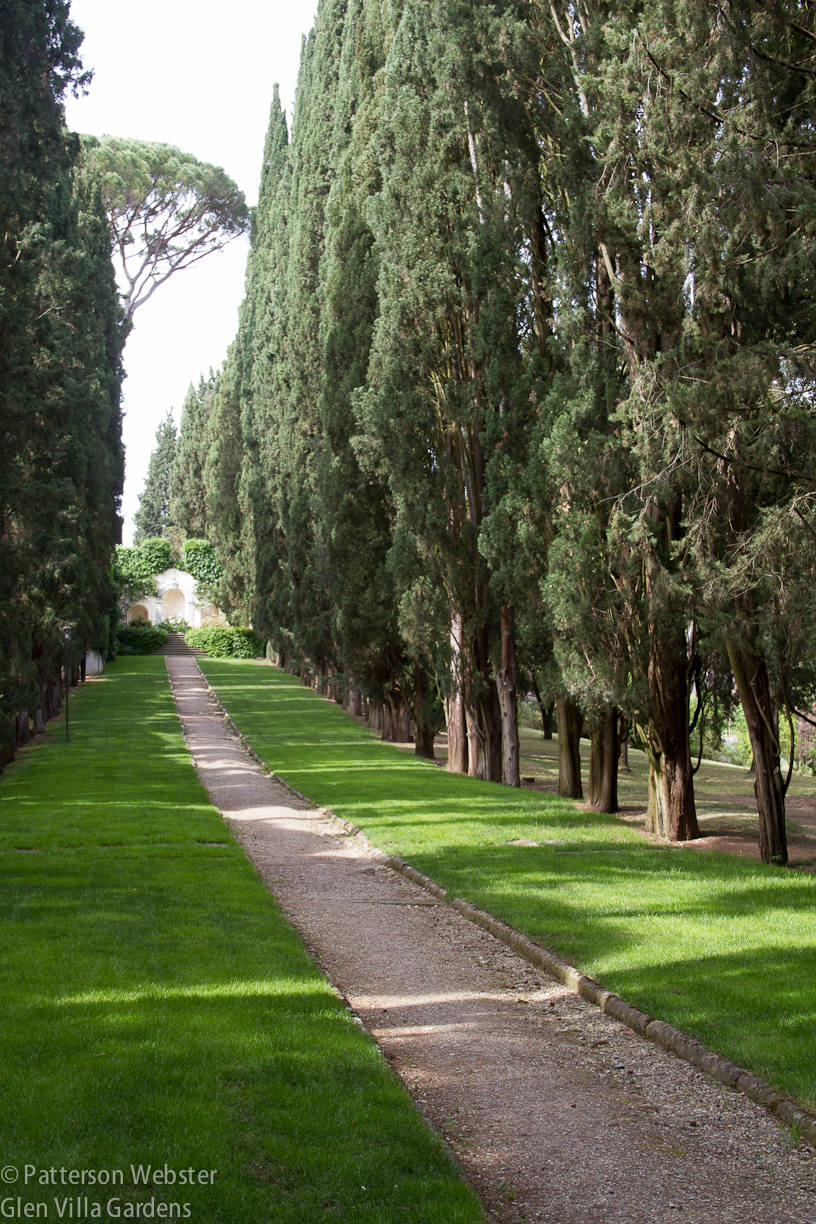
Apparently the cypress trees were so large when planted that some toppled in high winds shortly afterwards.
This ascent, although considerably gentler and less dramatic, reminded me of the one at Villa d’Este, where an arduous climb humbled visitors and magnified the importance of the Cardinal waiting to receive them at the top.
From all I have read, this worshipful approach would have suited Berenson’s character perfectly.
Visitors now enter the garden through the new Anne Pellegrino Garden in the Scholars’ court. Designed by the Baltimore architect Charles Brickbauer, the circular pool and the area around it are, to my eyes, sterile and uninviting, particularly on a hot day when sunlight glares.
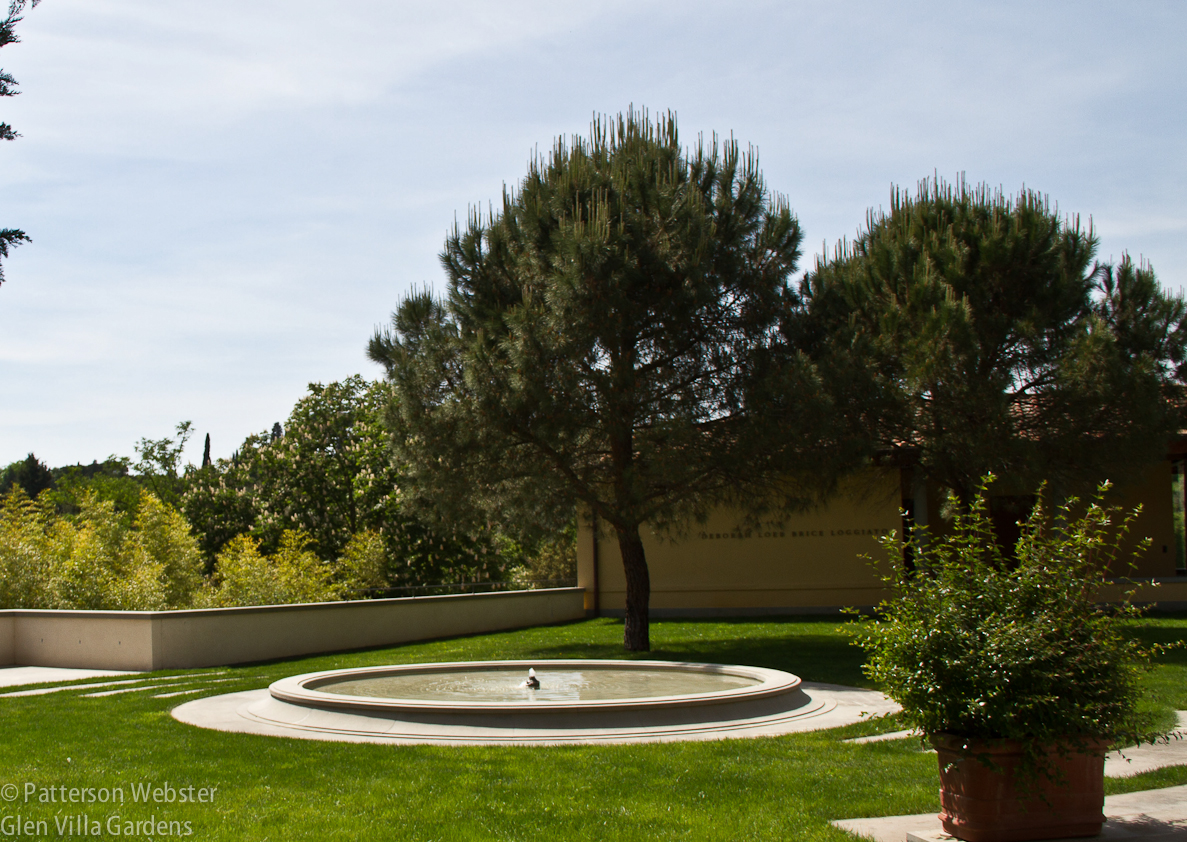
This fountain is part of renovations completed in 2010. Its circular form echoes a shape Pinsent used throughout the garden.
But beyond lies a hanging or pensile garden that is truly delightful. More Baroque than Renaissance, it feels light and joyful.
At one end of the pensile is the urn-topped wall seen in the photo above. At the opposite end is a busy yet satisfying composition that completes the space without overwhelming it.
A pebble mosaic carpet in front of the wall identifies unquestionably whose property this is.
Beyond the hanging gaden, to the south side of the villa, lies the Italian or Green Garden. To reach it I followed Professor Grieco through a shaded courtyard made on the site of an old limonaia, where Berenson took tea and held court. From the dimness we emerged through an archway into sunlight that at first was blinding. Once my eyes adjusted, I saw a series of terraces descending the hill in a composition composed entirely, it seemed, from shades of green.
The basic design incorporates elements of Renaissance and Baroque gardens that Pinsent had visited: box parterres, terracing and stone balustrades, carefully sited urns and grottoes. The influence of now-iconic gardens like Villa d’Este, Villa Lante and the near-by Villa Gamberaia, a garden much loved by the ex-pat community, is clear. Yet despite a sense of familiarity, the Italian garden feels modern and fresh.
Hedges are trimmed like steps, reflecting the descending terraces that lead along a central axis through the boxwood parterre. Behind the stepped hedges, other hedges rise in shades of green.
Walking down this central path, I felt enclosed by the garden, drawn into it in a most engaging way. The space looks longer than it is, a trick achieved by bringing the hedges at the bottom closer together. But what most appealed to me was the contrast between the tightly trimmed, straight-edged hedges and the rounded, cloud-like shapes of the trees in the bosco below. Treating the trees in this way is one of Professor Grieco’s innovations, and a great success.
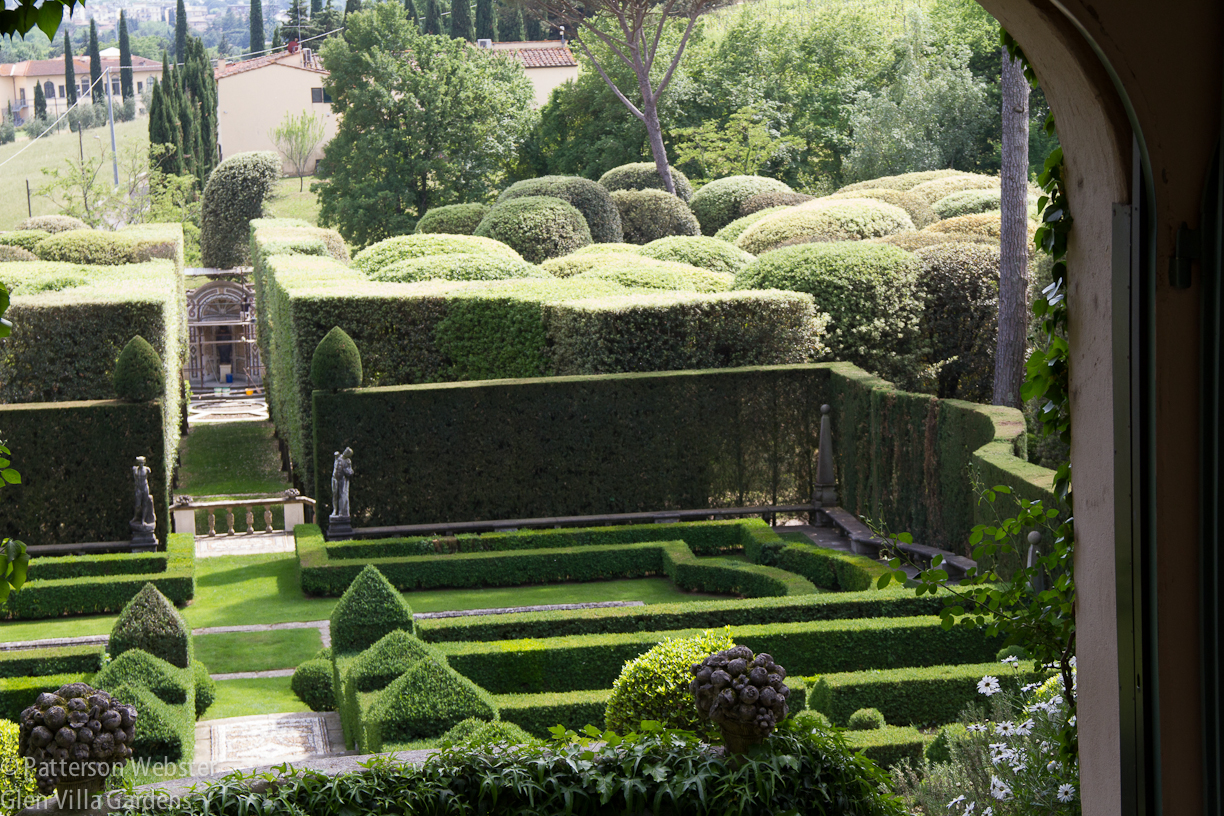
From the top terrace of the Italian garden, it is possible to see the rounded tops of the trees in the bosco, pruned to resemble billowing clouds or mossy hummocks .
The contrast in form works well in a garden full of dramatic shifts– between light areas and dark, open and closed, formal and loose.
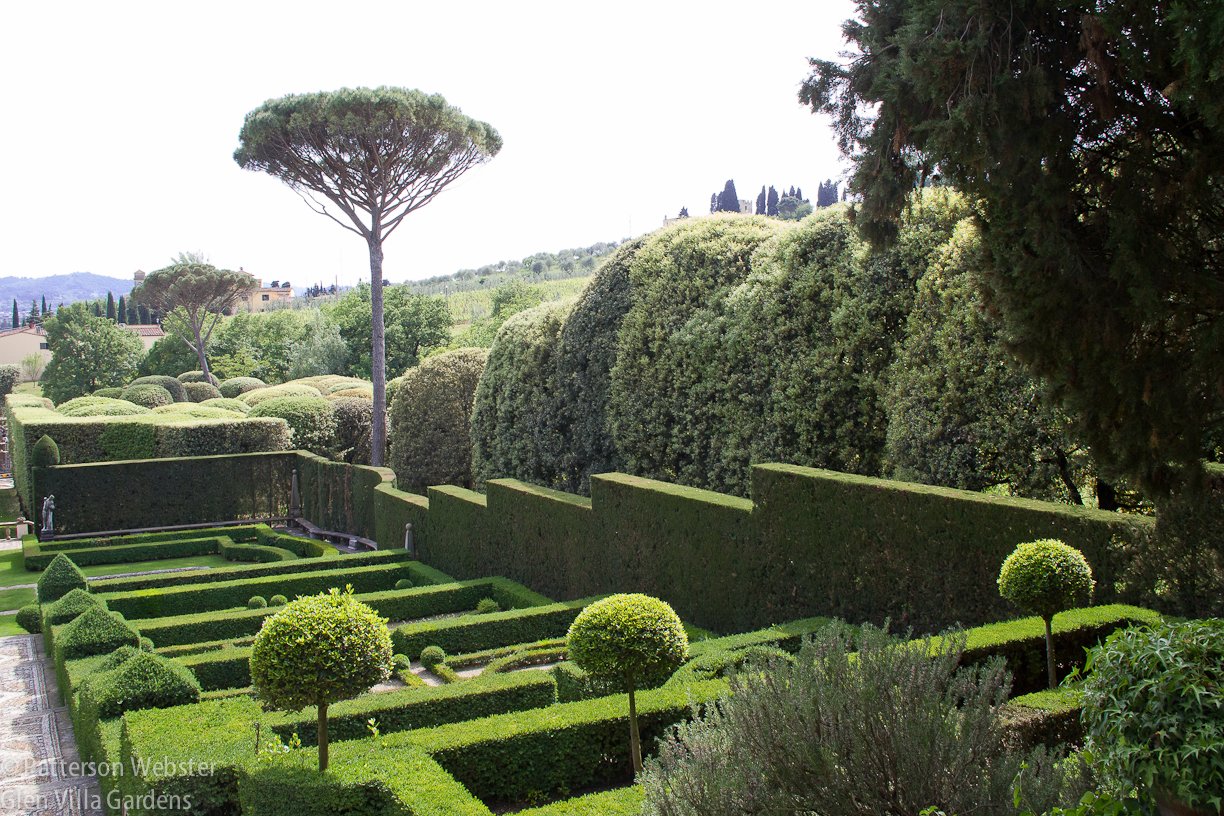
The rounded trees on the right are echoed in those at the bottom of the terraces, barely visible in this photo.
In her book about Cecil Pinsent, An Infinity of Graces, Ethne Clarke points out how Pinsent took into account the personality of the owner he was working for. At Le Balze, designed for the scholarly and reclusive American Charles Augustus Strong, Pinsent created garden rooms that feel subdued, almost monastic. At La Foce, he created a garden with an area for the flowers adored by Iris Origo while incorporating the geometric forms that intrigued him personally.
This same attention to personality is visible at Villa I Tatti. The egotist Berenson wanted a garden that reflected his growing importance in the world of Renaissance art, and Pinsent’s design put him front and centre — in the dining room, this was true quite literally. The connoisseur Berenson envisaged Villa I Tatti as a ‘lay monastery’ for the study of Mediterranean culture through its art, and Pinsent’s tightly controlled monochromatic Italian garden continues to reflect that vision today.
But Pinsent put himself and his fascination with geometric forms into the garden as well. According to Professor Grieco, at Villa I Tatti the circle is the unifying form. It is most obvious in the small courtyard where potted calla lilies now sit….
but it is present elsewhere in more subtle ways – in the boxwood balls that appear throughout the Green Garden or in a spiral trimmed shrub by a door.
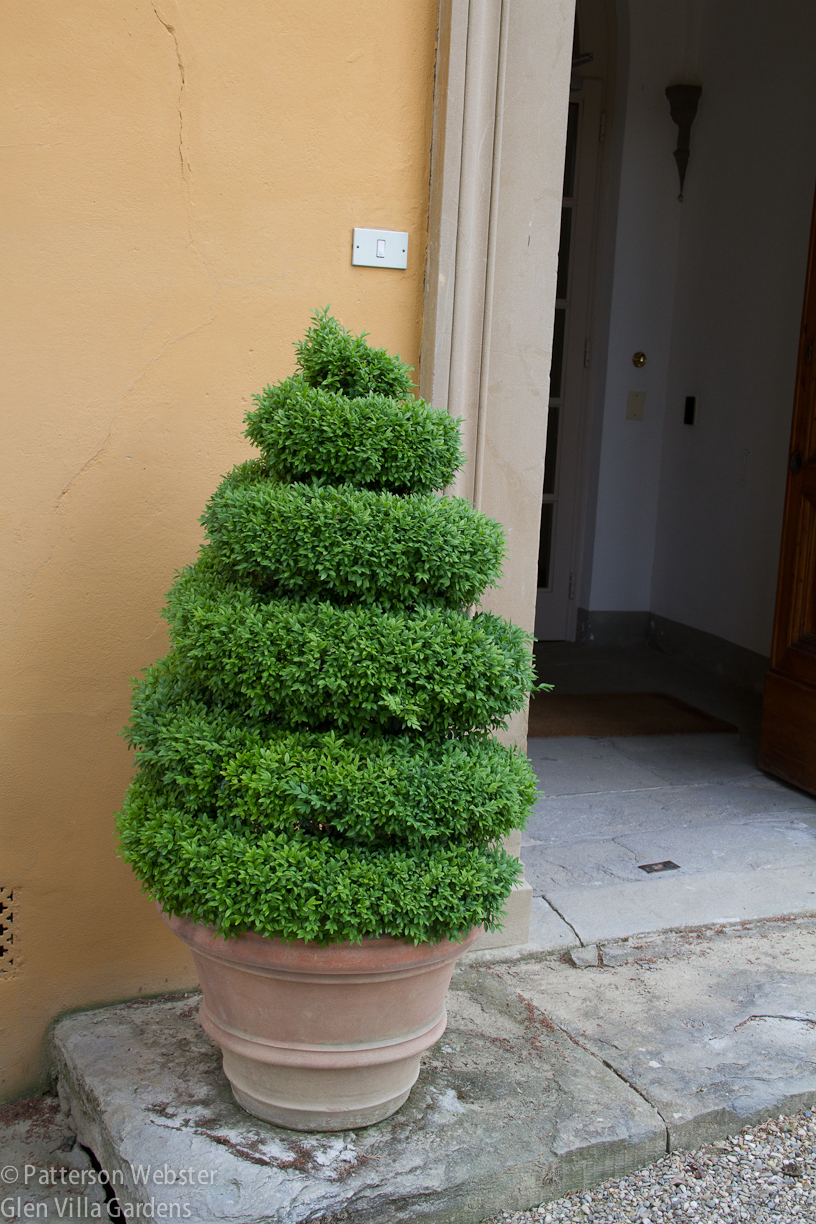
It has taken several years to create this geometric form. Professor Grieco credits the gardener — I don’t remember his name.
It appears in the recently restored wall near the original entrance…
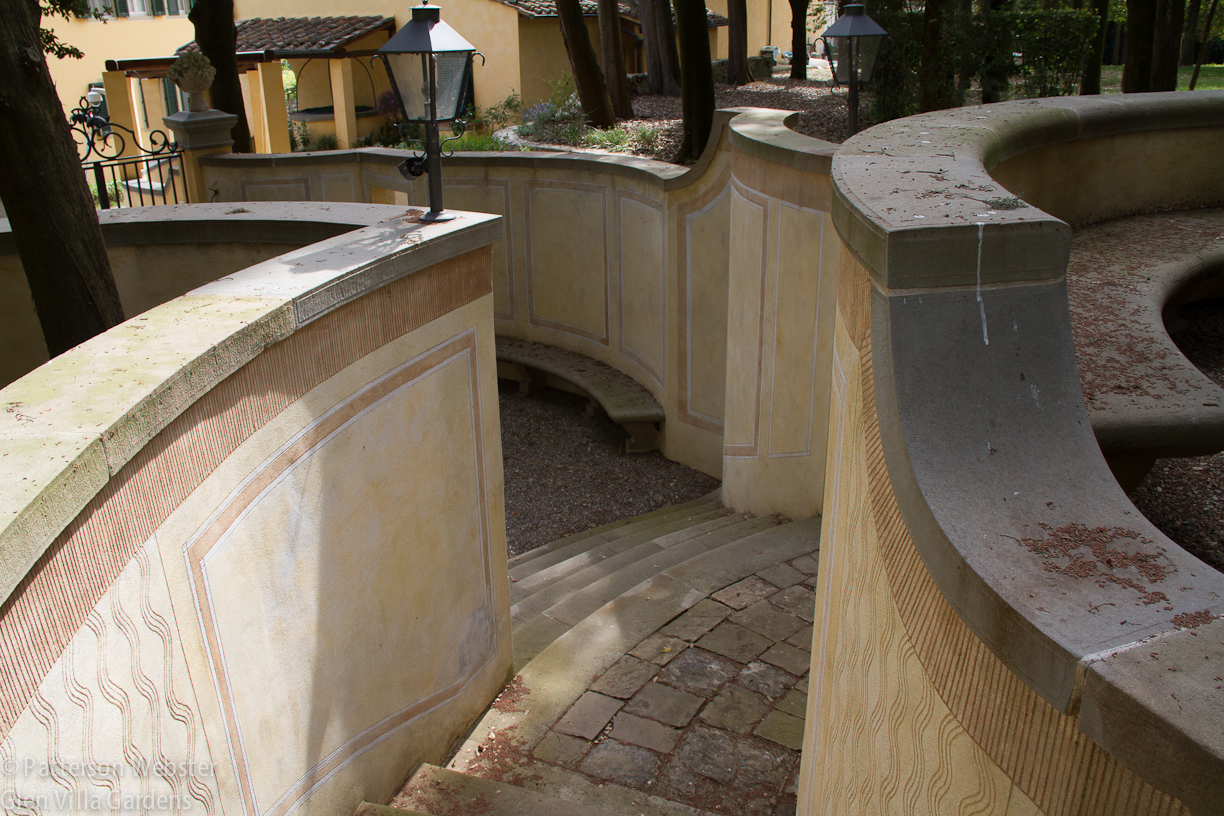
This entryway was restored in 2010 with the original colours and scratched plaster design, a Renaissance detail that was re-popularized by the Arts and Crafts movement in England and the Art Nouveau movement in Belgium and France.
in the sphere that tops the stone obelisks in the Green Garden…
and in the repeating circles that rise one above the other along the central path to the villa itself.
Metaphorically, the circle is present in Berenson’s daily walks, which took him in gentle loops from the hilltop villa through the dimly-lit cypress allée, up to the villa again, and in the circle of acolytes who collected around him.
At the end of the axis that leads through the Green Garden and the bosco is an elaborate pebble mosaic gateway, now being restored. This is a circle of a different kind, recycling to make old new again.
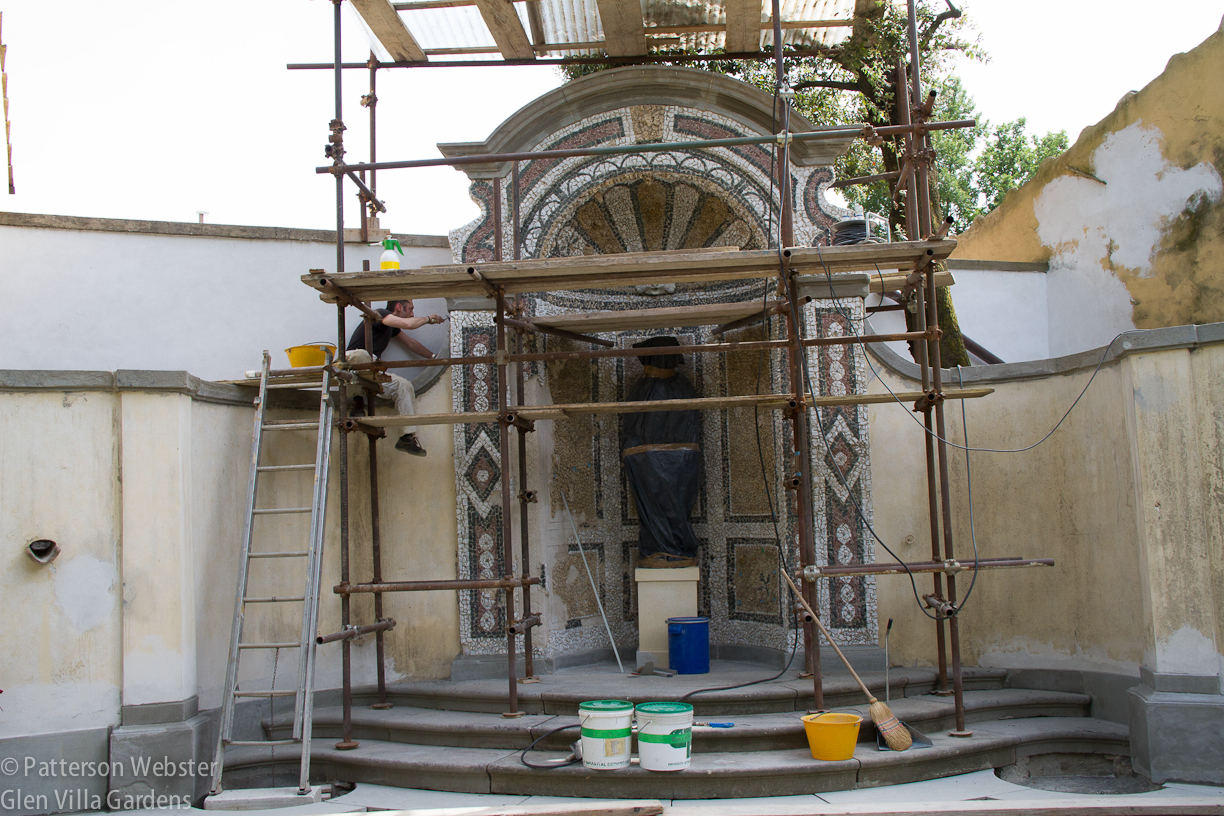
A major restoration is being done on this pebble mosaic. Note the circular openings on each side of the steps.
Visiting a garden for the first time is an experience in discovery. At Villa I Tatti I discovered a garden that is satisfying to be in, with corners and details still waiting to be explored. I look forward to the day when I visit it again.



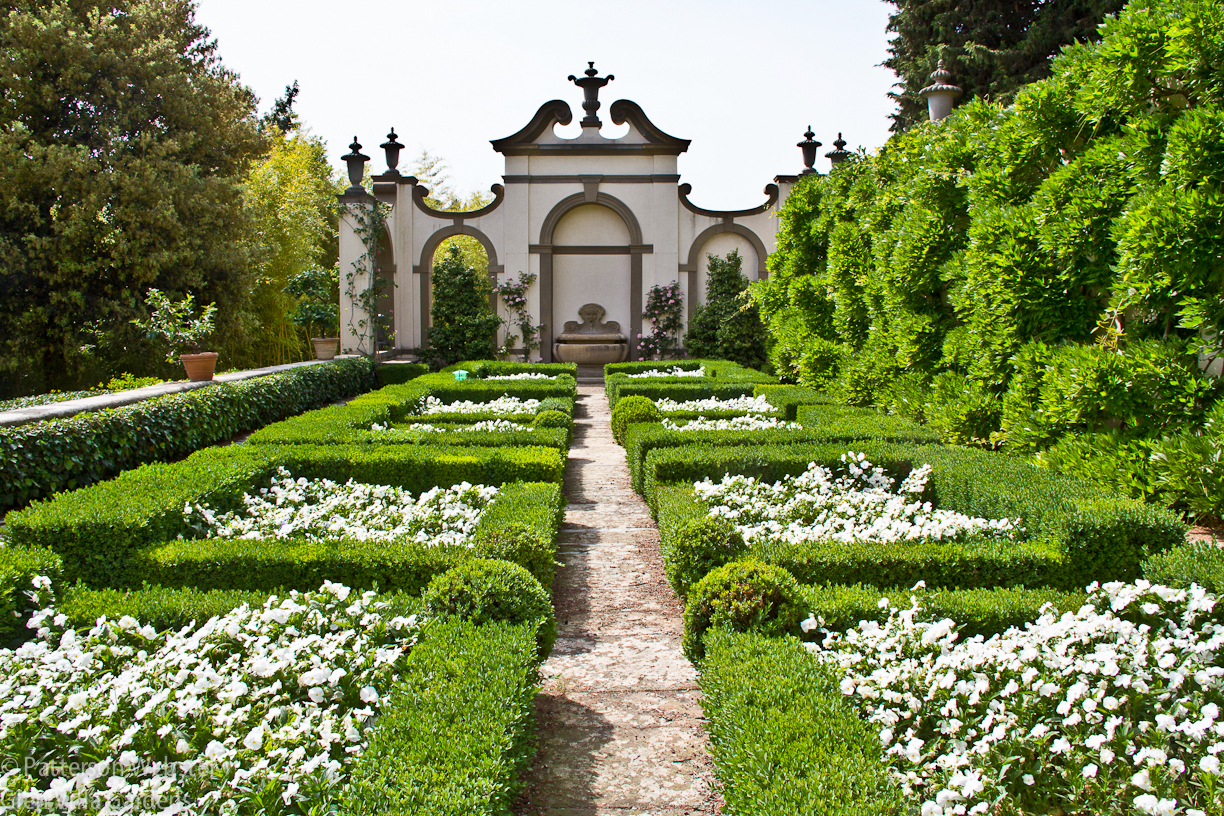
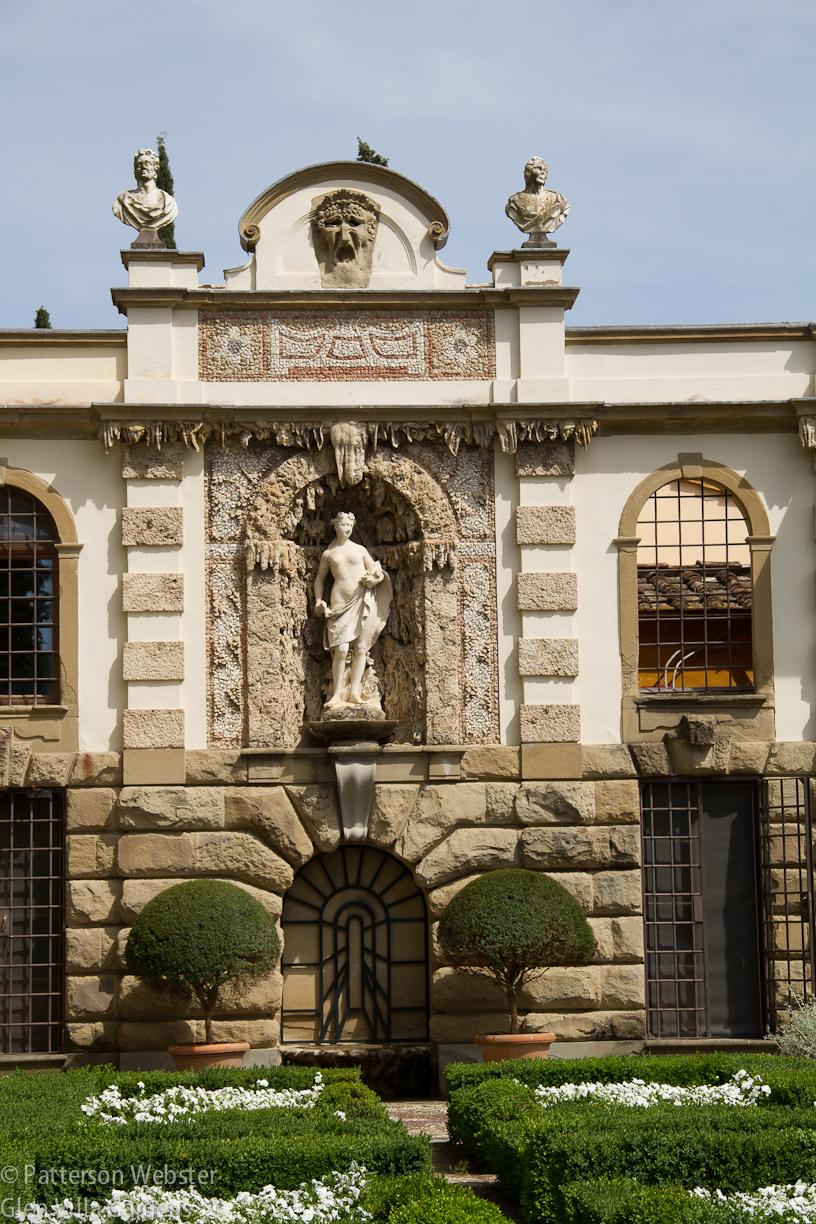
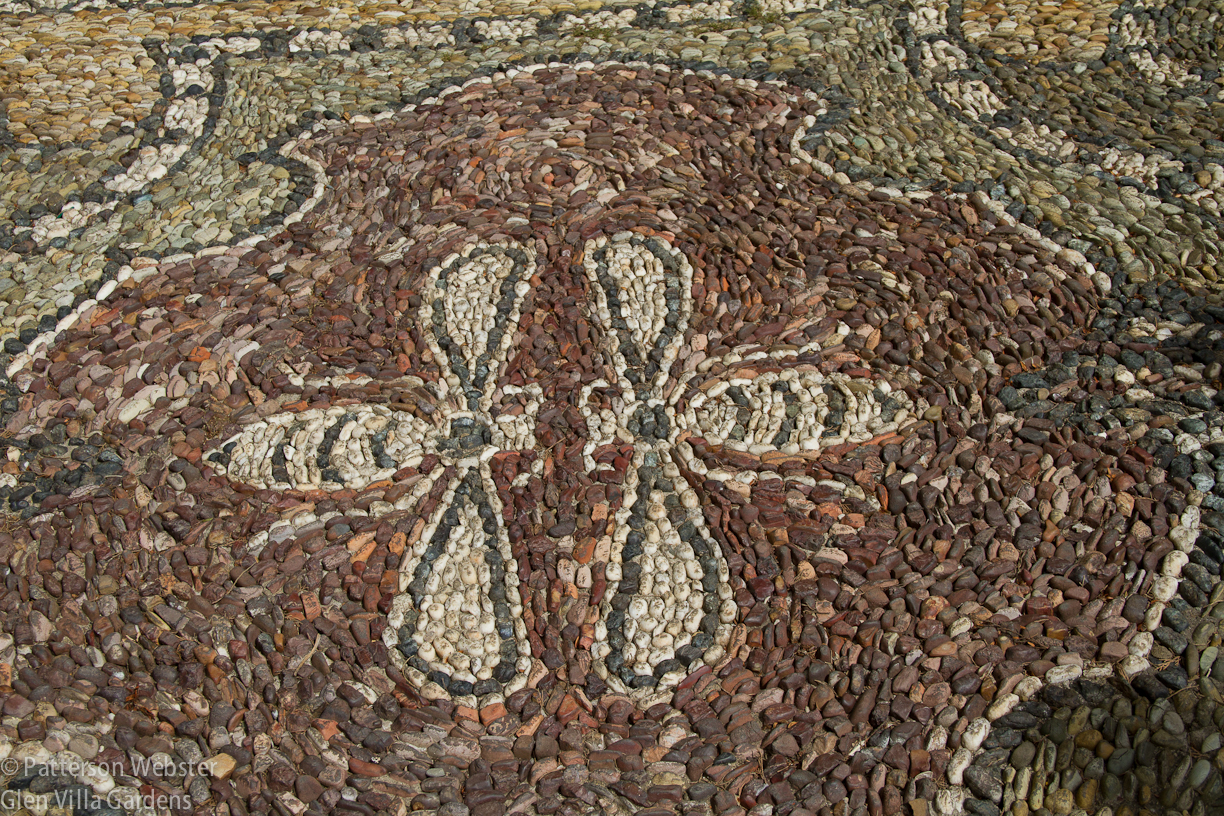
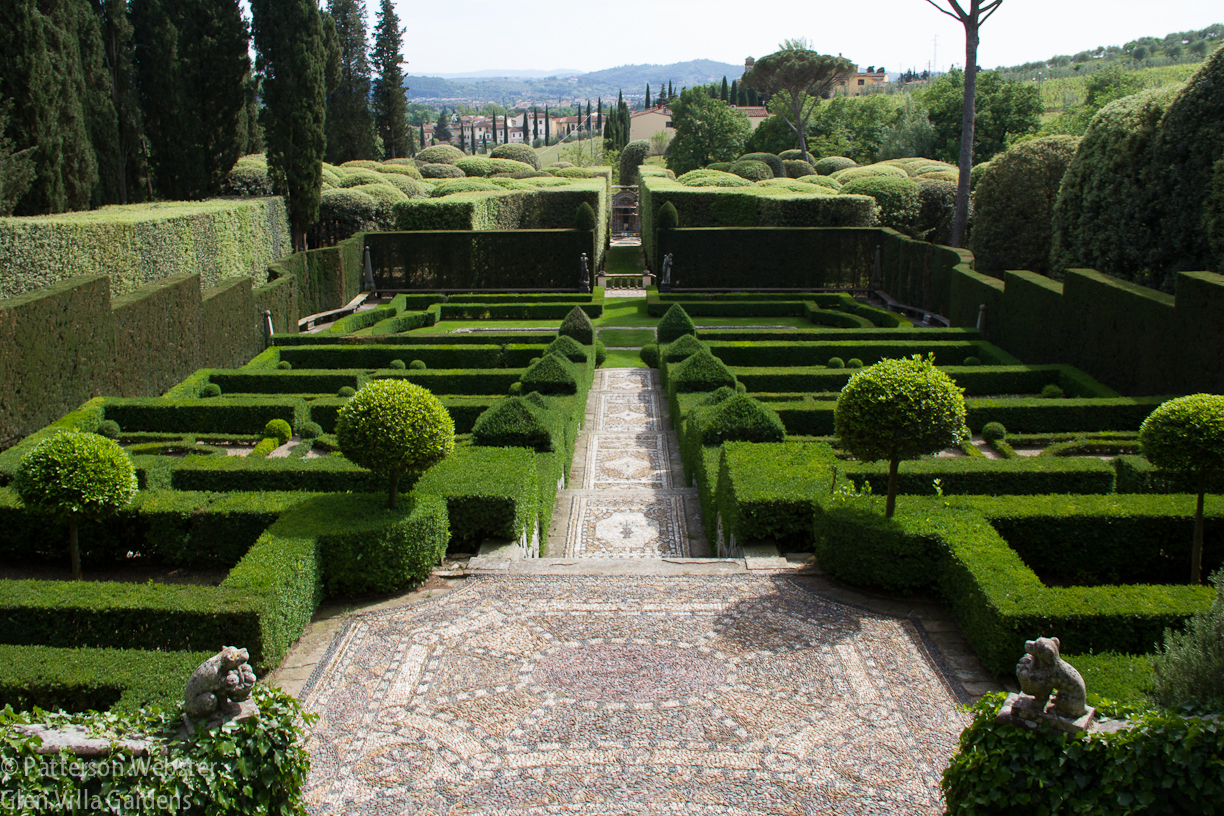
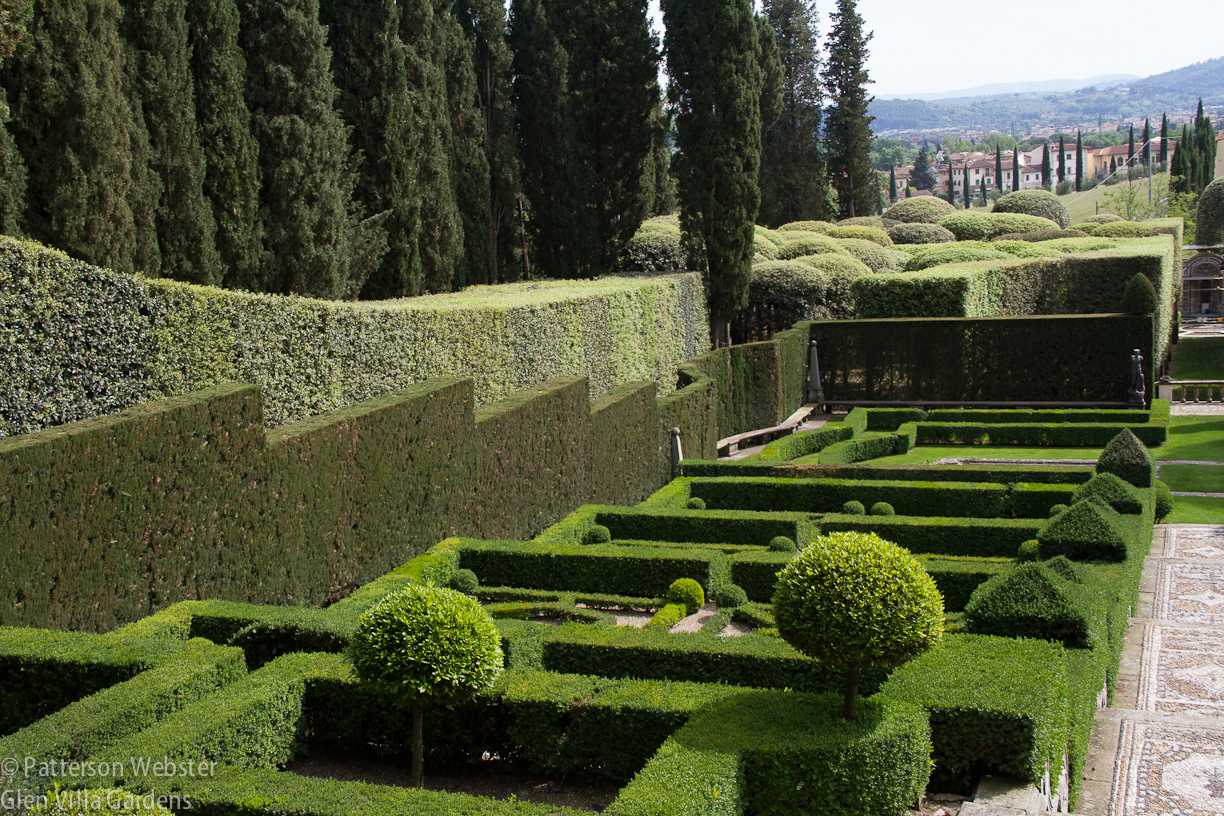
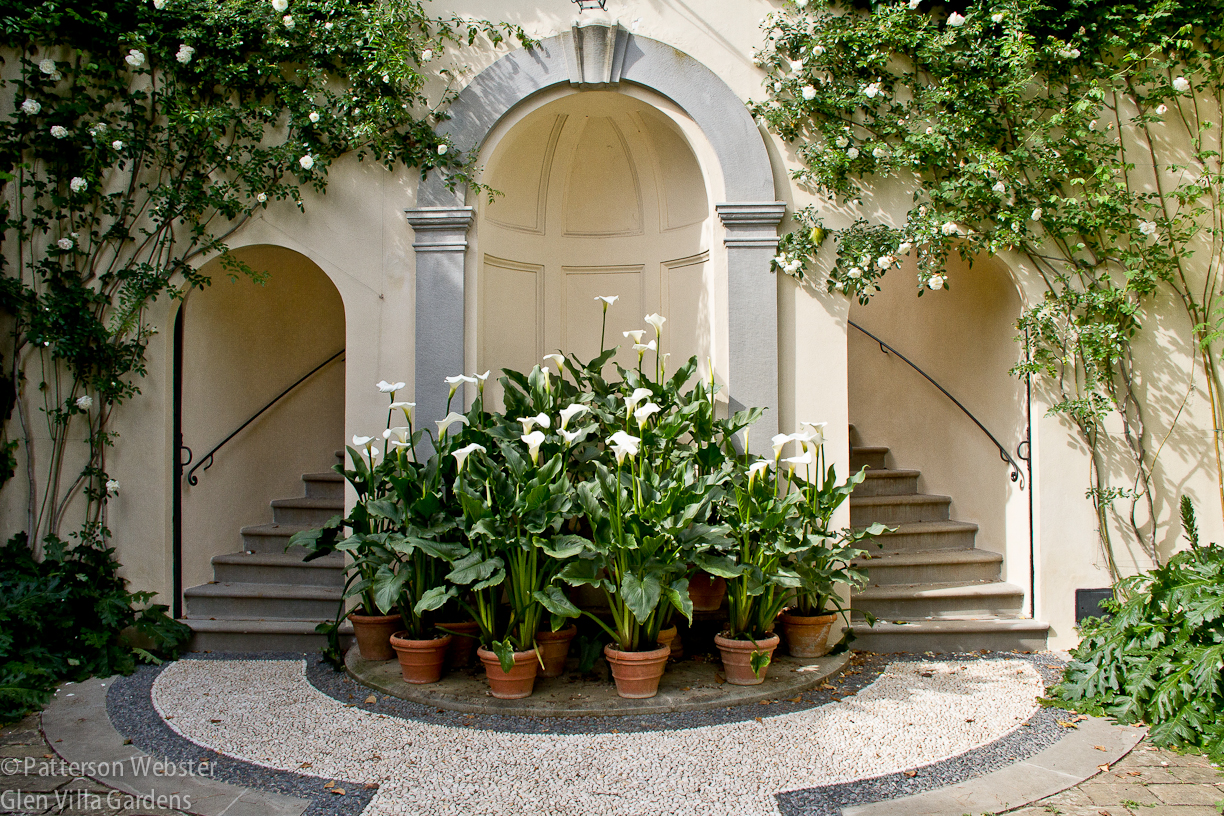
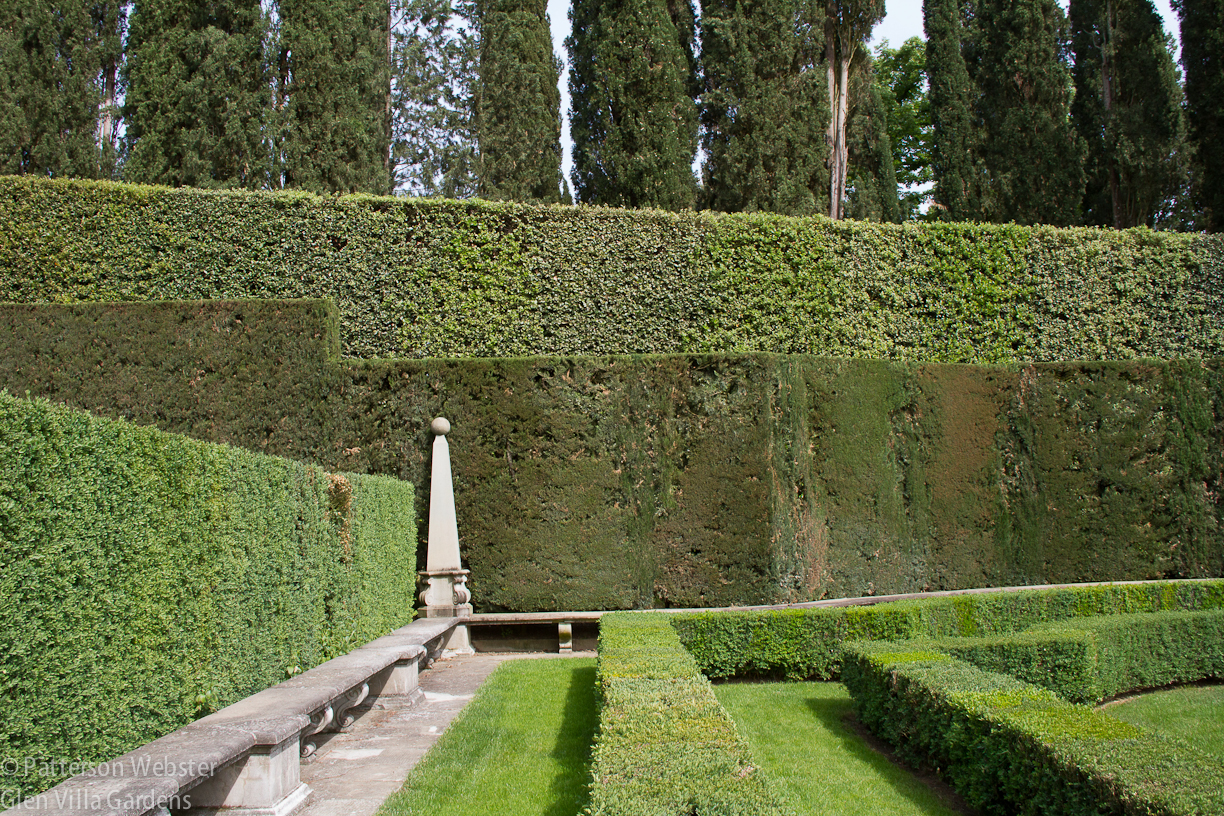
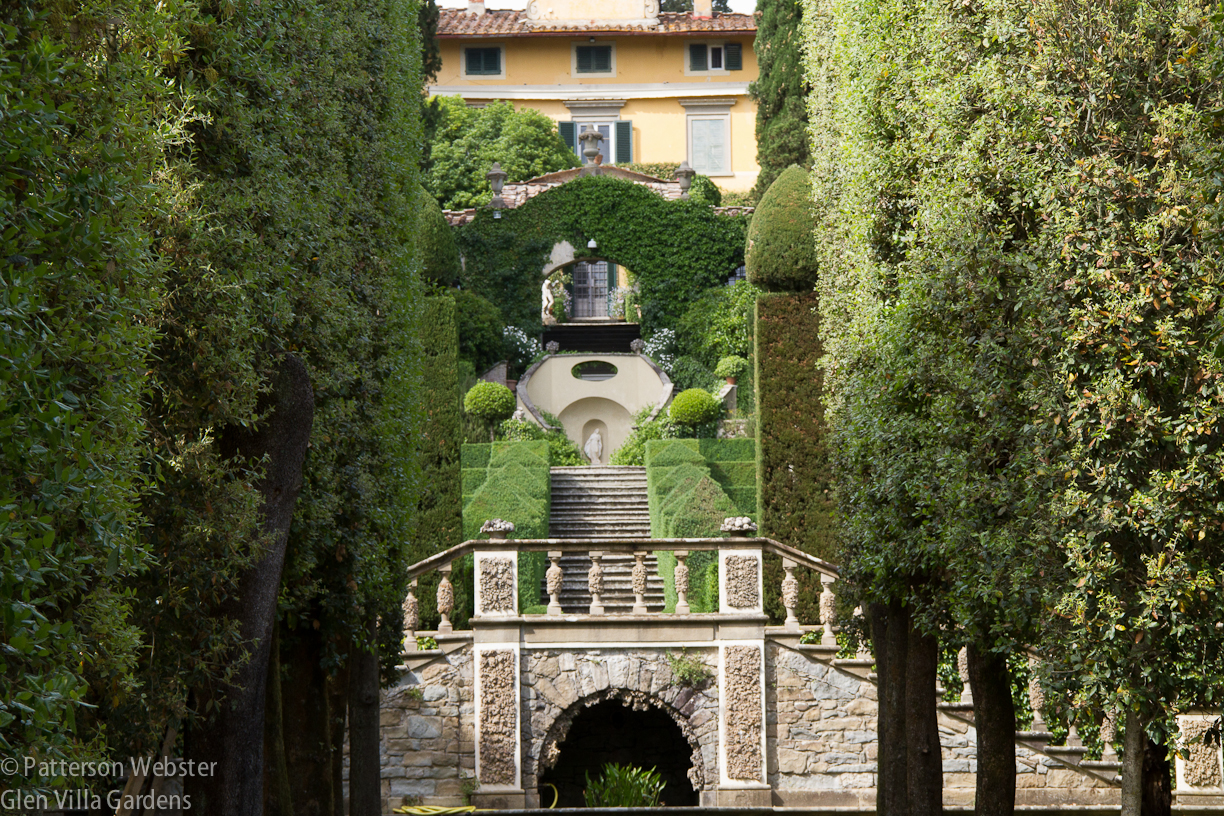




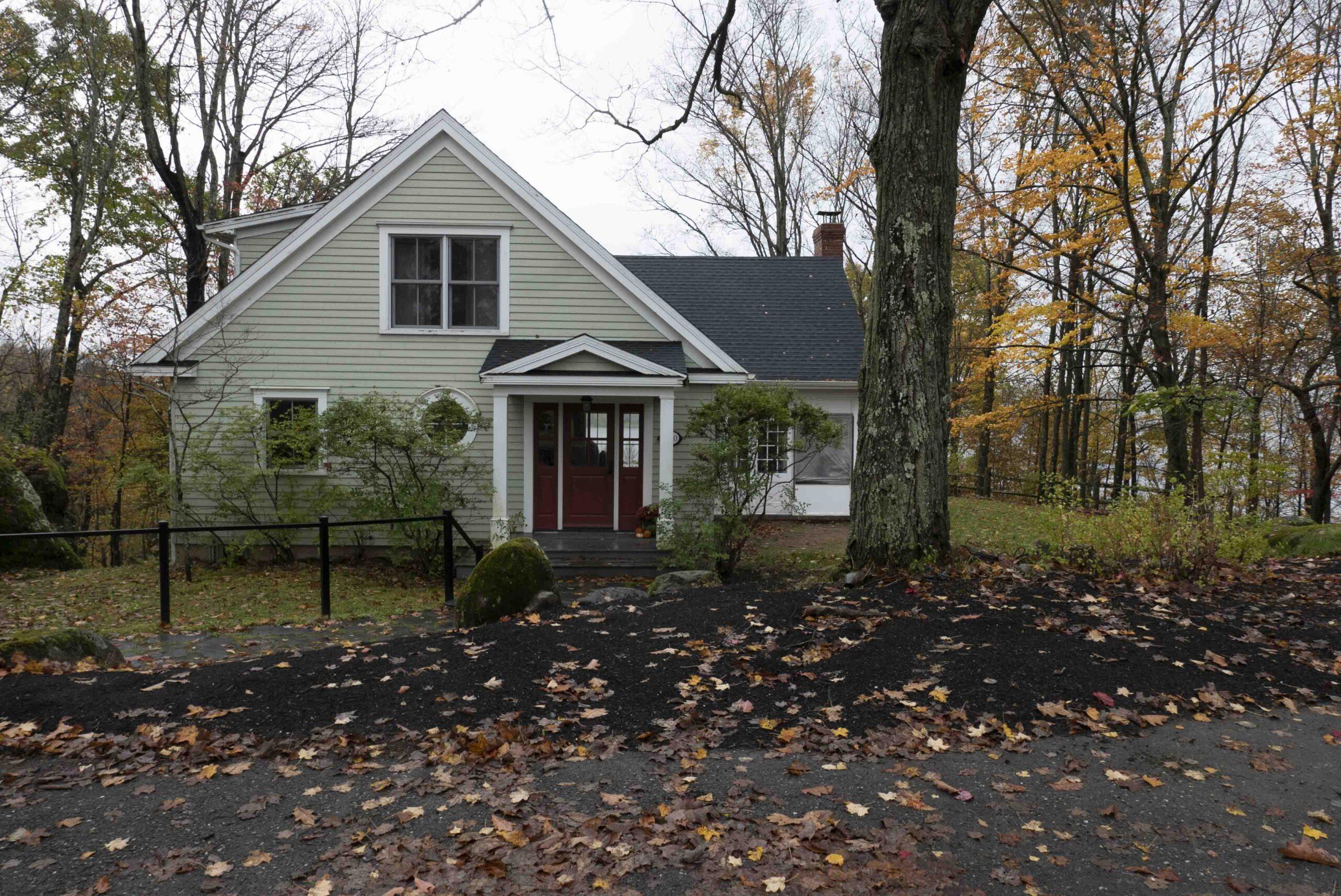
Magnificent! This would take a second tour for sure…..Harvard you say!
It was magnificent, and I do hope I’ll have the chance to visit it again.
Excellent review. I am not a lover of formal gardens, but I can appreciate the history and some of the details like that bee mosaic. Oh, and I do like the hanging garden.
I thought I had replied to this, Jason… I used to scorn formal gardens but I find them more and more appealing. I think this is a result of additional confusion in my life — the straight lines allow me to relax!
How exciting that you got to visit this garden. I first heard about Pinsent on Monty Don’s Italian Gardens program and was immediately fascinated by both him and his clients. I am now reading “The Infinity of Graces” and enjoying it tremendously.
It’s not terribly difficult to arrange a visit and seeing I Tatti is definitely worth any work involved in setting it up. I also enjoyed “The Infinity of Graces” — I’m glad to know that you are, too.